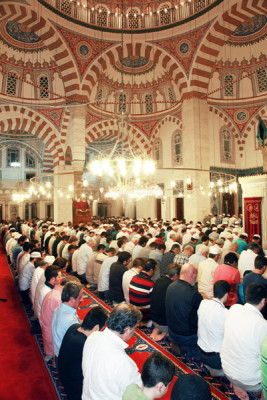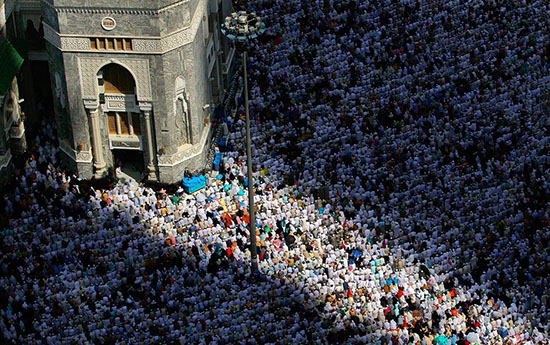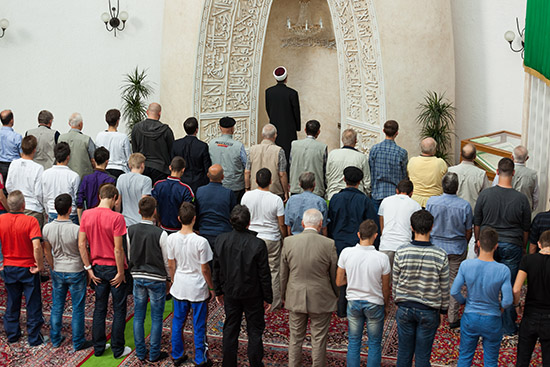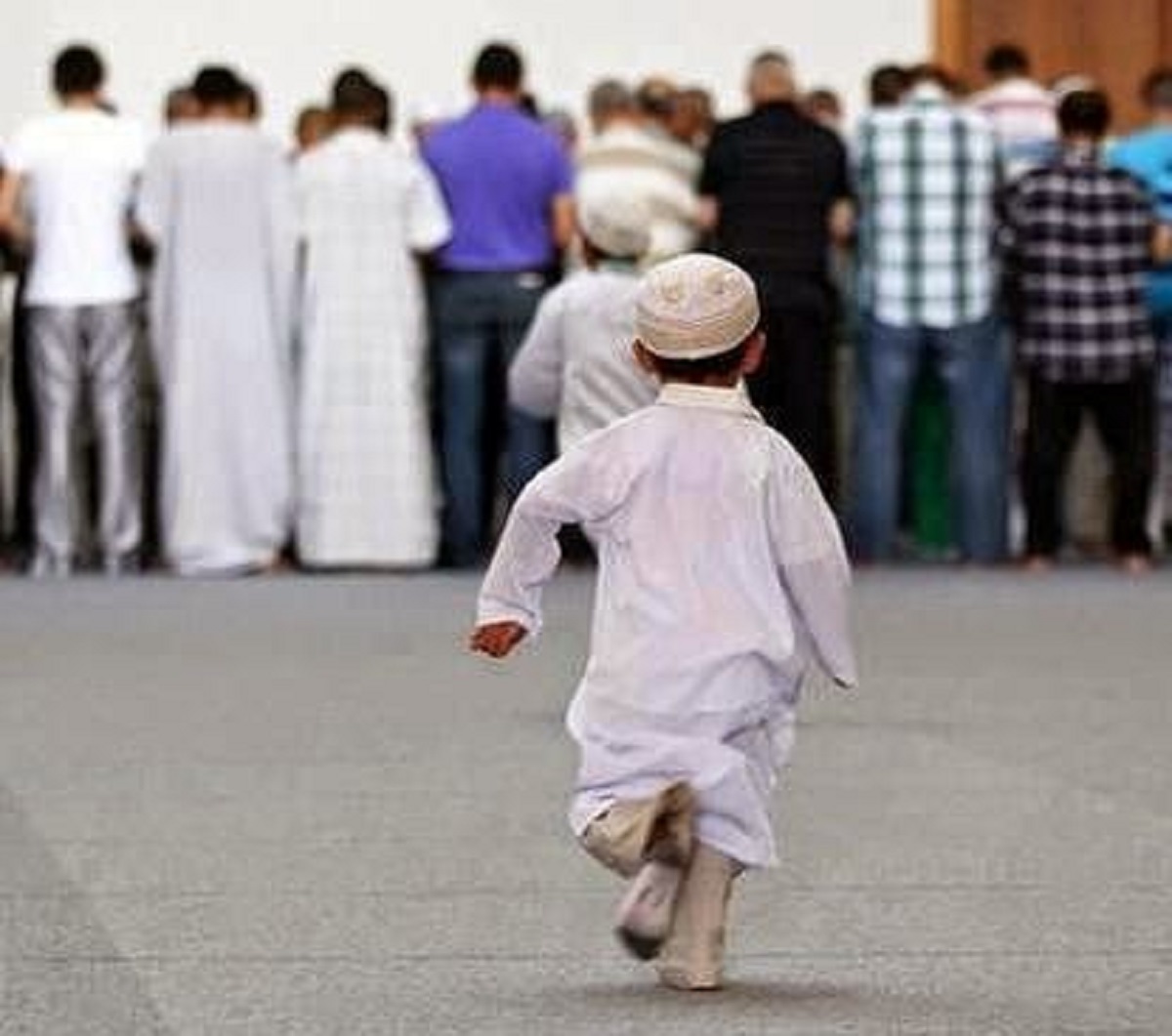Current Section: model

Lesson Congregational Prayer
Allah commands the male Muslims to perform the five daily prayers in congregation. A great reward has been mentioned regarding it as part of its virtue, as the Prophet ﷺ said: «A prayer prayed in a congregation is twenty-seven degrees more excellent than prayer prayed by a single person» (Al-Bukhari, 645, Muslim, 650)
The smallest congregational comprises of at least two people, the person praying and the imam. However, the larger the congregation, the dearer it is to Allah.

The Meaning of Following the Imam
The praying person must follow the Imam during prayer by observing his bowing, prostrating, and listening to his recitations. He does not precede or contradict him, rather he does the action immediately after his imam.
Following the Imam
The Prophet ﷺ said: «The Imam has been appointed to be followed (in the congregational prayers). So, when he utters the Takbir, utter the Takbir too, and do not utter the Takbir until he utters it. When he bows, you should bow and do not bow until he bows. When he says, "Allah listens to him who praises him," say, "O Allah, our Rabb, to you is the praise." When he prostrates, you prostrate and do not prostrate until he prostrates.» (Al-Bukhari 701, Abu Dawud, 603)
The person who is most versed in the Quran should be given preference in leading the prayer and with the best voice. The Prophet ﷺ said: «The one who is most versed in Allah's Book should act as Imam for the people, but If they are equally versed in reciting it, then the one who has most knowledge regarding Sunnah.» (Muslim 673)

The Imam should stand in front of the congregation who form straight lines, standing shoulder to shoulder, behind him, and the front rows should be filled and completed first. If there is only one worshiper, he stands to the right of the Imam.

Whoever arrives late should join the congregation in the same position where he finds the Imam. When the Imam concludes the prayer by reciting the tasleem, he completes the rest by making up for what he missed. The Raka’ah that he catches up with the Imam when he first joins the prayer counts as the beginning of his prayer, and whatever he makes up for after the Imam concludes the prayer counts as the rest of his prayer.

The prayer is determined by its number of Raka'at; if a latecomer joins the congregation while the imam is in the bowing position, he is considered to have offered a complete Raka'ah. On the other hand, if he misses the bowing position, then he has missed the whole rak'ah and all the rak'at before it. Therefore, he must enter the prayer with the imam, and when the imam ends the prayer, he must stand and pray whatever he has missed.

Examples for whoever missed the start of the prayer with the Imam:
Whoever joins the congregation during the Fajr prayer while the Imam is in the second raka'ah must assume a standing position after the Imam concludes the prayer with the tasleem and make up for the raka'ah which he has missed. He must not make the tasleem until he completes the Raka'ah, for the Fajr prayer consists of two raka'at, and he has only offered one raka'ah with the Imam.
If he joins the congregation during the Maghrib prayer while the Imam is reciting the final tashahud, he must, after the Imam concludes the prayer with the tasleem, offer three complete raka’at. This is because he has joined the congregation only at its end while the Imam is reciting the final tashahud. A raka’ah only counts as complete if one joins the congregation while the Imam is in the bowing posture.
Suppose he joins the congregation during the Dhuhr prayer while the imam is in the bowing position of the third raka'ah. In that case, this means that he has offered two complete raka'at (which count for the worshiper as his two first raka'at of the Dhuhr prayer). As soon as the Imam concludes the prayer with the tasleem, he must then offer two more raka'at, namely the third and fourth raka'at, considering that the Dhuhr prayer consists of four units of prayer.


